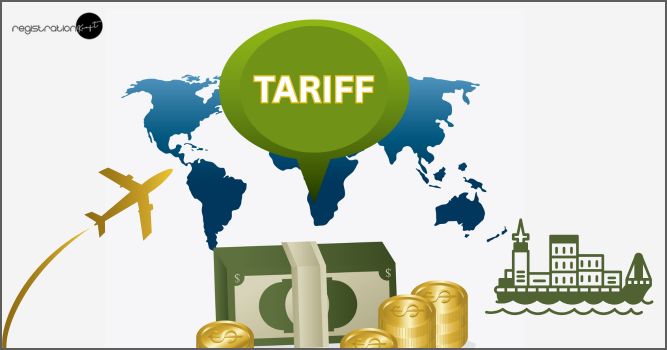What is Meaning of Tariff

Tariff is a fundamental concept in international trade and economics, often shaping market access, domestic industry protection, and trade policy across nations. This article delves into what tariffs are, their various types, how they function as barriers, how tariff charges are applied, and contrasts tariffs with non-tariff barriers.
What is a Tariff?
A tariff is a tax or duty imposed by a government on imported or exported goods and services. The primary aim is to restrict imports, encourage local industry, generate government revenue, or influence economic and trade relations between countries. Tariffs are typically calculated as a percentage of the value of the goods or as a specific fee per unit.
Types of Tariffs
Tariffs can be classified based on their structure, purpose, or the stage at which they are imposed. The main types include:
- Ad Valorem Tariffs: Charged as a percentage of the value of the imported good. For example, a 10% ad valorem tariff on cars means an extra 10% tax is levied on the car’s price.
- Specific Tariffs: Levied as a fixed fee per physical unit of imported goods, such as $5 per kilogram of cheese.
- Compound Tariffs: Combine both ad valorem and specific tariffs. For example, $2 per item plus 5% of the value.
- Protective Tariffs: Imposed primarily to protect domestic industries from foreign competition by making imported goods more expensive.
- Revenue Tariffs: Aimed at generating income for the government rather than protecting domestic industry.
Tariff Barriers
Tariff barriers refer to the obstacles in international trade created by imposing tariffs on foreign goods. These barriers increase the price of imported products, giving domestically produced goods a price advantage in the local market. By raising consumer prices, tariff barriers can limit market access for some exporters and diminish the competitiveness of foreign goods.
Common examples of tariff barriers include:
- High import duties on consumer electronics to support local manufacturers.
- Seasonal tariffs on agricultural goods to protect local farmers during harvest periods.
Tariff barriers are often the most transparent form of trade restrictions, as they are clearly recorded and openly applied at customs.
Tariff Charges
Tariff charges are the actual amounts payable under tariff regulations. The calculation of tariff charges depends on the type of tariff:
- For ad valorem tariffs: Tariff charge = (Imported good value) × (Tariff rate %).
- For specific tariffs: Tariff charge = (Number of units imported) × (Tariff per unit).
- For compound tariffs: Tariff charge = (Fixed fee per unit) + (Percentage of the value).
Customs authorities collect these charges at the border or port of entry, and the revenue often goes directly to the government treasury.
Difference between Tariff and Non-Tariff Barriers
The distinction between tariff and non-tariff barriers is crucial in understanding modern international trade policy:
| Aspect | Tariff Barriers | Non-Tariff Barriers |
| Definition | Taxes on imports/exports | Regulatory, procedural, or policy hurdles other than taxes |
| Form | Monetary charge (ad valorem, specific, or compound tariffs) | Quotas, licenses, standards, subsidies, embargoes, administrative procedures |
| Transparency | Transparent and easily quantifiable | Often opaque and hard to measure |
| Purpose | Revenue generation, protectionism | Protectionism, quality control, control of volume, or retaliation |
| Example | 15% import duty on steel | Import quota on cars, product safety standards |
Tariff barriers affect prices directly, while non-tariff barriers influence the volume, quality, and entry procedures for imported goods.
Latest Case Study: The 2025 US-India Tariff Dispute
In July 2025, the US imposed a 25% tariff on Indian goods, citing India’s tariff/non-tariff barriers and continued purchases of Russian oil and defense equipment. These tariffs, set to take effect on August 1, are part of a broader wave impacting 92 countries, with India facing the highest rates among Asian developing economies.
Details and Impacts:
- The tariffs target sectors such as garments, gems, auto components, and leather.
- US importers directly bear the costs, making Indian goods significantly less competitive in the US.
- India’s export-driven sectors are expected to see reduced orders and possible job cutbacks.
- Some estimates suggest India’s GDP growth could drop by up to 0.2% due to these tariffs.
- In the wake of these tariffs, India and the US are set for intense negotiations, with the final rate potentially reduced if a deal emerges.
- The Indian government, while acknowledging the impact, has responded with firm diplomatic measures, prioritizing support for farmers and domestic exporters.
- This move has ripple effects across global supply chains, not only raising costs but also causing uncertainty and a need for exporters to find alternative markets or adapt their strategies.
Significance:
The 2025 US-India tariff escalation is a textbook case of how tariffs can quickly reshape global trade relationships, impacting competitiveness, supply chain dynamics, and even geopolitical alliances. It also highlights the interconnectedness of tariff and non-tariff barriers, with regulatory and diplomatic responses playing out alongside direct financial charges.
Conclusion
Tariffs are a powerful tool governments use to regulate international trade, balance domestic economic priorities, and manage fiscal objectives. Understanding the different types of tariffs, how they function as barriers, how charges are computed, and knowing the differences between tariff and non-tariff barriers is essential for businesses, policymakers, and anyone involved in global commerce.
Categories: Business
Tags:





